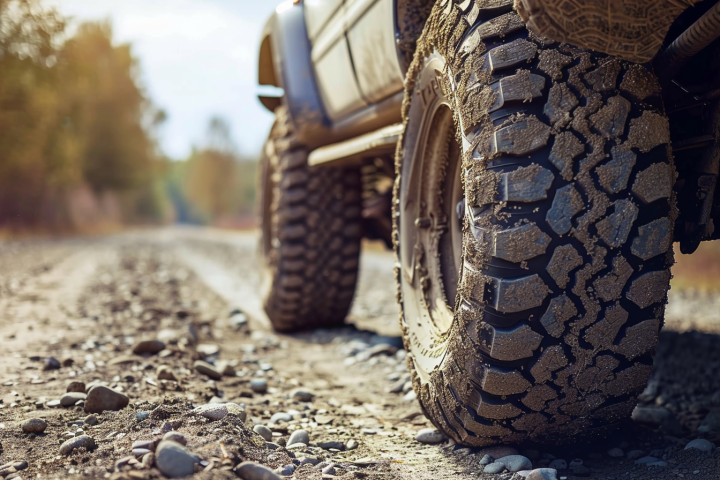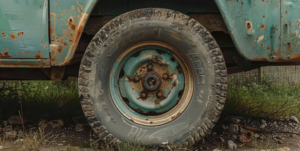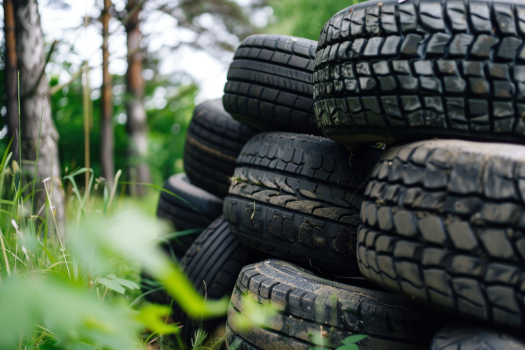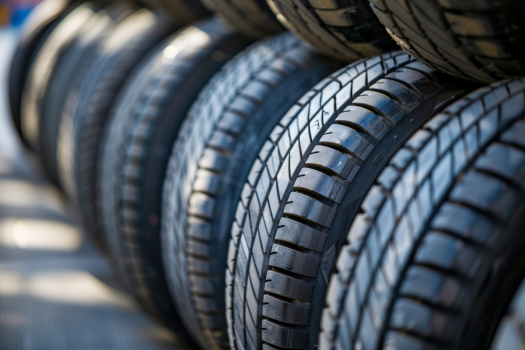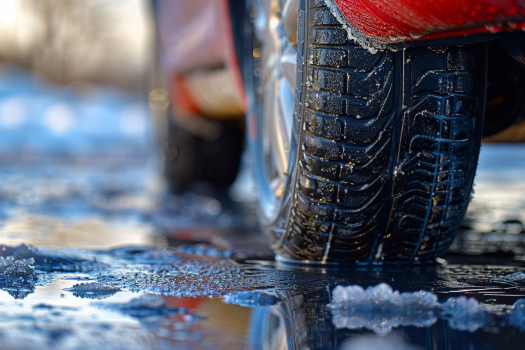Last Updated on April 21, 2024
Understanding and Preventing Tire Bubbles for a Smooth Ride
When it comes to maintaining the health and longevity of your vehicle’s tires, one issue that often goes unnoticed until it becomes a major problem is the dreaded “tire bubbles.” These seemingly harmless bulges on your tire’s surface can lead to serious safety issues and costly repairs if left unattended.
In this blog post, we’ll explore tire bubbles, their causes, and how to prevent them to ensure a smooth and worry-free ride.
Oh, look! Bubbles!
No, not those kinds of bubbles.
Has one or more of your tires been doing the shimmy, shake, and wobble recently? Not good. We’re addressing irregularities that are neither playful, fun, nor harmless: tire bubbles.
What are Tire Bubbles?
Tire bubbles sound like a bulbous bulge protruding from the tire’s sidewall. The tire’s sidewall is the smooth face of the tire that connects the tread to the wheel rim. Punctured, torn, or bulging tire sidewalls are a much bigger issue than a typical flat in your tread.
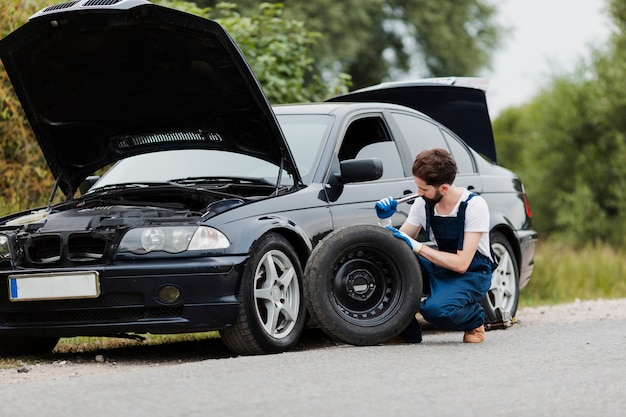
What causes Tire Bubbles/Sidewall Bulges?
Tire bubbles are caused by air leaking from the inside of the tire into the outmost areas. Because tires are built with so many layers, air can get trapped in tiny pockets and eventually cause a noticeable bubble. Like a real bubble, the bubble will burst if too much pressure builds up inside. In this scenario, a tire blowout can occur.
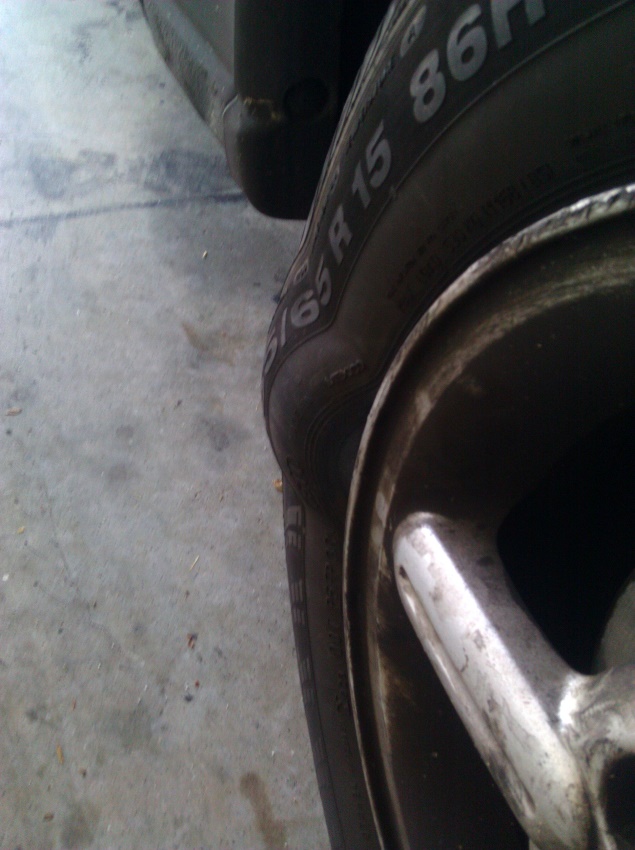
Remember when you accidentally pinched your finger in a tight space (like a drawer or door), and the skin bubbled? The same thing happens when you hit a curb; your tire is pinched between the wheel and the curb, causing a bubble.
Other common types of impact are potholes, speed bumps, railroad crossings, construction areas, medians, and miscellaneous debris. Defective tires can happen, but they are a much more uncommon cause of tire bubbles.
Is it safe to drive on a tire with a bubble?
The short answer – no.
The long answer – not. Regardless of major or minor damage, driving on one or more faulty tires is never safe. Doing so could cause irrevocable damage to your vehicle and jeopardize your safety and the safety of motorists on the road. If you notice tire damage while your vehicle is parked, do not drive! Damaged tires are dangerous at highway speeds, especially in inclement weather or busy roads.
How do I repair my tire sidewall?
Unfortunately, the tire sidewall cannot be repaired. Unlike a typical flat—which can often be patched if the damage is in the tread—sidewall damage cannot be patched. This is because tires are made of cords that run around the tire’s tread and make direct contact with the road.
On the sidewall, there are no cords. So, when a hole, bubble, bulge, or other irregularity occurs, the patch will not hold for long because there’s nothing to hold on to.
Fortunately, many companies offer warranties covering damage incurred from everyday road hazards. Tires-Easy is happy to offer Free Road Hazard Protection!
This exclusive program is complimentary with purchasing passenger or light truck tires from Tires-easy.com for 12 months. It covers damage from a puncture, bruise, or impact break incurred during normal driving on roads maintained by state or local authorities. For more details on what’s covered under the Free Road Hazard Protection program, read the Terms & Conditions.
Other things you can do to maintain your tires:
- Check tire pressure weekly. Refer to your owner’s manual or the inside edge of your driver’s side door for the appropriate pressure level (psi).
- Get your tires rotated every 3,000-5,000 miles to make sure tires wear evenly. Remember that tires mustn’t be replaced in pairs. Replacing two tires is satisfactory, but replacing all four tires together is ideal.
- Always carry a donut – a spare tire, that is. You never know when you’ll need it!
- Remain vigilant. Inspecting your vehicle from top to bottom regularly is great preventative maintenance. Then, you might catch a faulty tire well before a blowout or flat occurs.
Conclusion
Tire bubbles, those conspicuous bulges on a tire’s sidewall or tread, can signify hidden issues that may lead to safety hazards and costly repairs if ignored. They typically occur when air escapes the tire, creating a noticeable bubble. This can happen due to various factors, including impacts with curbs, potholes, or manufacturing defects. It’s essential to address tire bubbles promptly, as driving on a compromised tire poses serious safety risks.
To prevent tire bubbles and ensure tire longevity, regular maintenance is critical. This includes monitoring tire pressure, rotating tires for even wear, and always carrying a spare tire. Additionally, staying vigilant with vehicle inspections can help identify tire problems early, minimizing the chances of blowouts or flats. Taking these proactive steps can safeguard your safety and extend the life of your tires for a smooth and worry-free driving experience.
FAQs
Can I drive on a tire with a bubble?
No, driving on a tire with a bubble is unsafe. Driving on a tire with a bubble poses serious safety risks, including the potential for a tire blowout. It can also cause irreparable damage to your vehicle and jeopardize your safety and that of other drivers on the road. If you notice a tire bubble, it’s essential to address it promptly and avoid driving on that tire.
What causes bubbles on tires?
Tire bubbles, also known as sidewall bulges, are typically caused by air escaping from within the tire and accumulating in outer areas. Common causes include impacts with curbs, potholes, speed bumps, and other road hazards. Manufacturing defects can also contribute to the formation of tire bubbles, although this is less common. Maintaining proper tire pressure and avoiding road hazards can help prevent these bubbles from developing.
How do you fix air bubbles in tires?
Unfortunately, air bubbles in tires cannot be repaired. Unlike typical tread flats that can often be patched, sidewall damage involving tire bubbles affects the tire’s structural components. As a result, patching is not a viable solution. If you encounter a tire with a bubble, the best action is to have the tire replaced. Many tire manufacturers offer warranties that cover damage caused by common road hazards, providing added protection for drivers.




